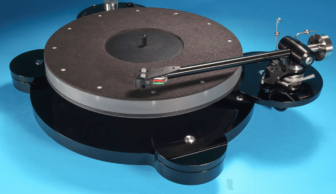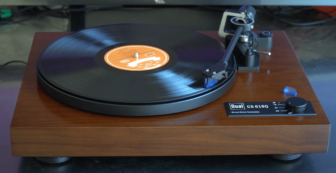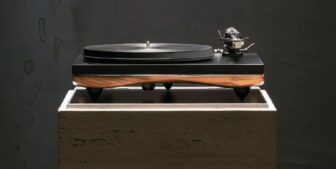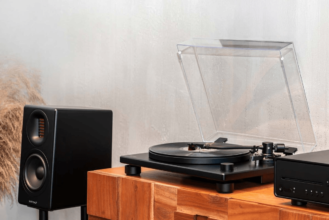Cambridge Audio Alva TT V2 Turntable Review
Instead of talking about tracking angles or external phono preamps, the best way to win over new analog fans is by offering turntables that sound great, are practical to use, and simply get the job done.
by Alexander Rose-Fehling
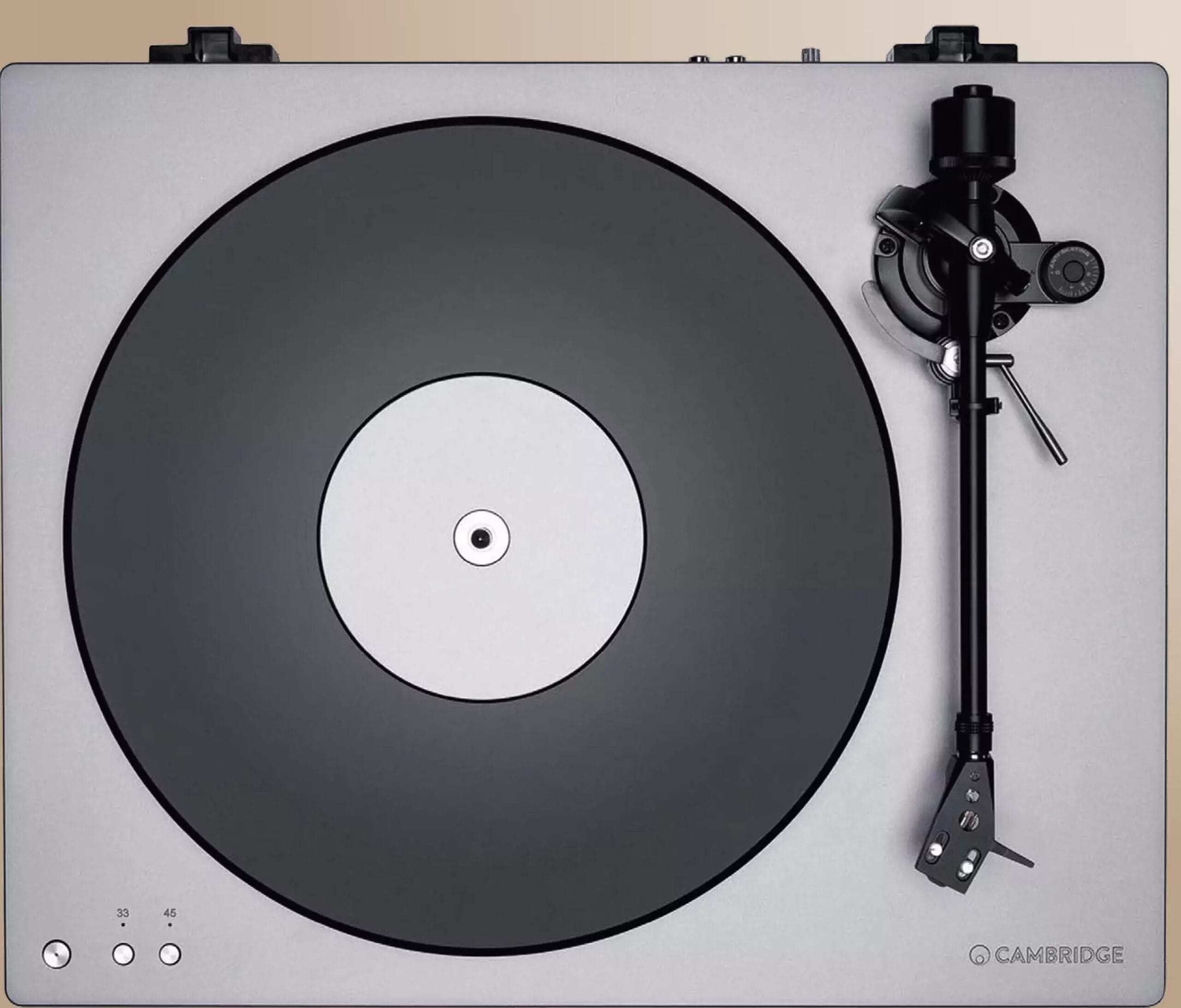
Four years after its initial launch, Cambridge Audio’s Alva TT turntable now comes in version 2. This new edition feels well-rounded and should appeal to an even wider audience. Yes, the price has gone up—but it’s still money well spent, especially given that everything else is getting more expensive nowadays.
The previous model was already excellent, as confirmed by its 7Review highlight rating. However, this new version tweaks a few details further. The original’s built-in, non-switchable phono preamp caused some debate. Although the sound was excellent, it limited the ability to experiment with other setups, and low-output MC cartridges weren’t supported. Now, a switch on the back lets you turn off the MM phono stage, bypassing it completely in the signal path. That’s a big plus, since unused electronics can dampen high frequencies. Here, the signal flows straight to the analog outputs with no extra load, just as it should.
Compared to Cambridge’s other well-regarded standalone phono preamps (Solo, Duo, CP2), they’ve added another 3 dB of gain—so at 42 dB, the stage can handle a high-output MC cartridge, like the Alva MC that’s pre‑installed in the headshell. You can also buy that MC separately for around USD 550.
New Tonearm
Because Rega ceased its OEM tonearm service in this price range, Cambridge Audio turned to a different supplier. While Rega arms are superb, the new tonearm here is also excellent and comes with a detachable headshell, making it much easier and safer to swap out or upgrade cartridges. Along with the switchable phono stage, that means more flexibility than before.
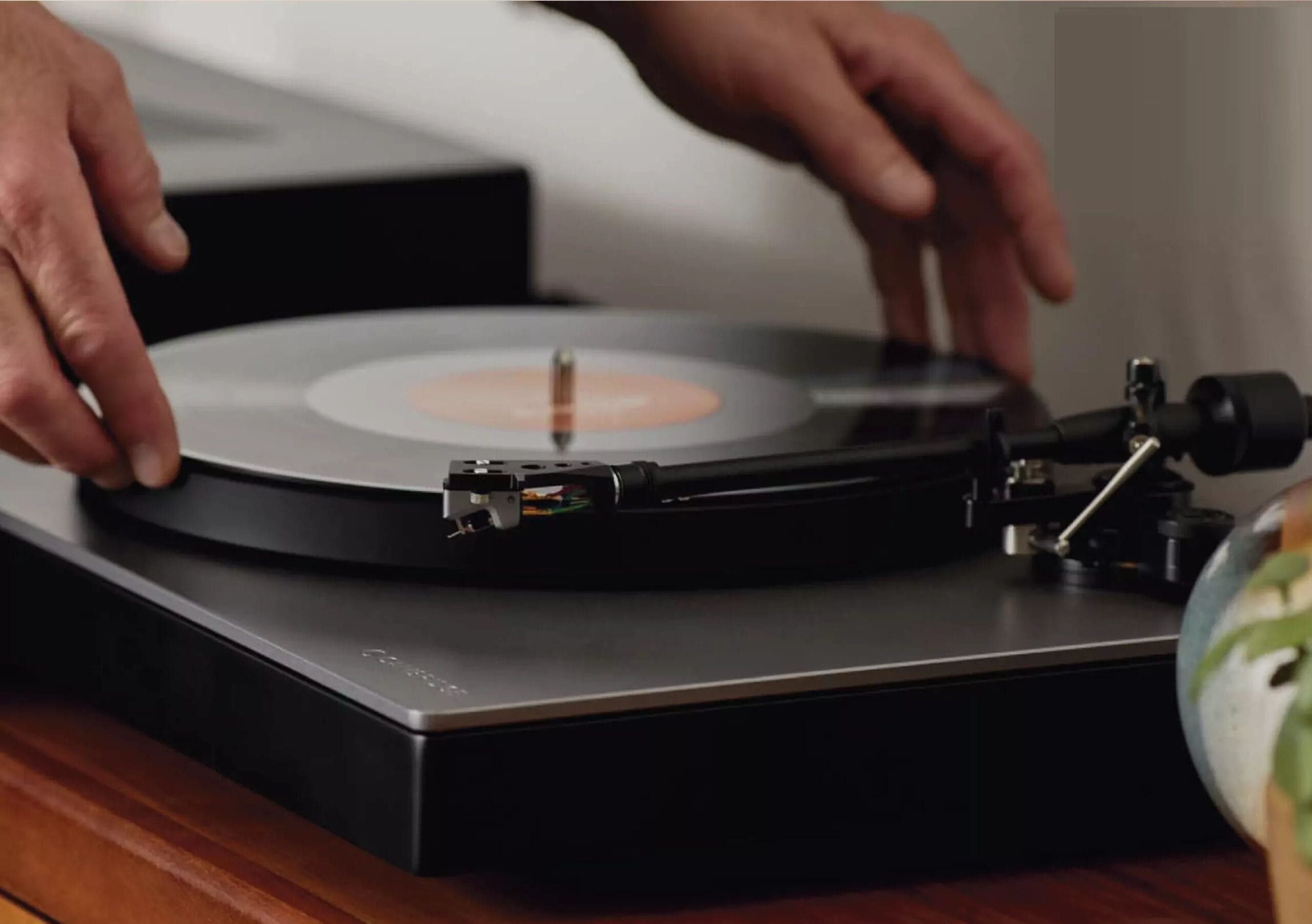
The Alva TT V2’s build and finish are first-class, and it’s a pleasure to use. It also comes with a dust cover.
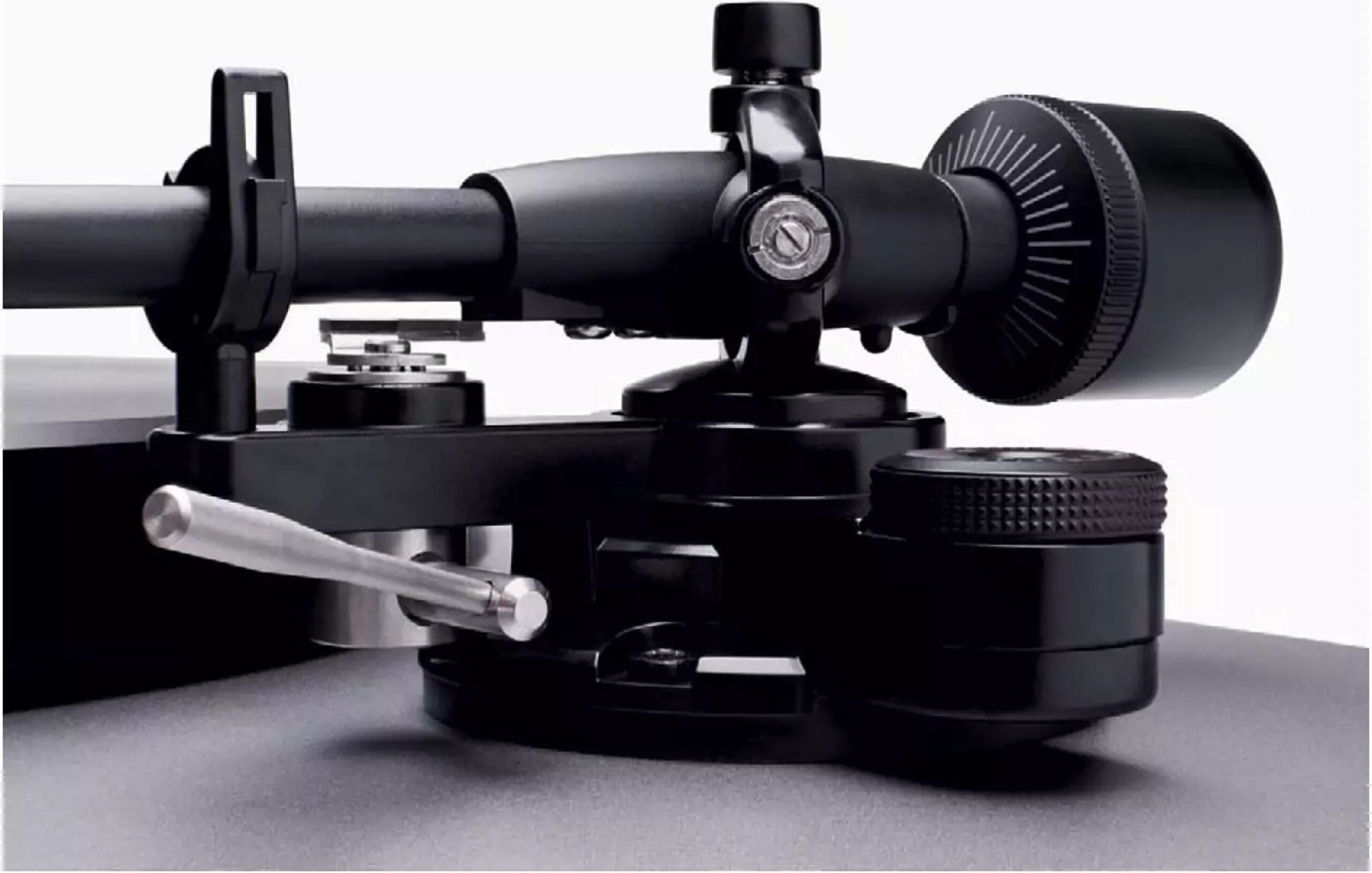
The gimbal-bearing tonearm can be fine-tuned with a flathead screwdriver, but this must be done carefully to avoid damaging the bearing.
Cartridge swapping is now simpler than it was with the previous model.
Weight, Stability, and Elegance
All of this is built on a beautiful plinth that features a 6 mm‑thick aluminum top plate. Along with ensuring weight and stability, it looks great, too. The engraved Cambridge logo sits up top, and three buttons control power, plus 33 or 45 rpm. None of that has changed from the original, and the 2 cm‑thick polyoxymethylene platter is also the same.
Bluetooth is still on board, allowing you to send the turntable’s output wirelessly to headphones, amps with Bluetooth, or Bluetooth speakers. That can turn the Alva TT V2 into a multiroom source: play a record in your living room while also piping it to a Bluetooth speaker in another room. Now you can do both at the same time—provided you’re using the internal phono stage, where Cirrus Logic’s CS5340 chip converts the signal at 24 bits. In testing, this worked without any hiss or hum.
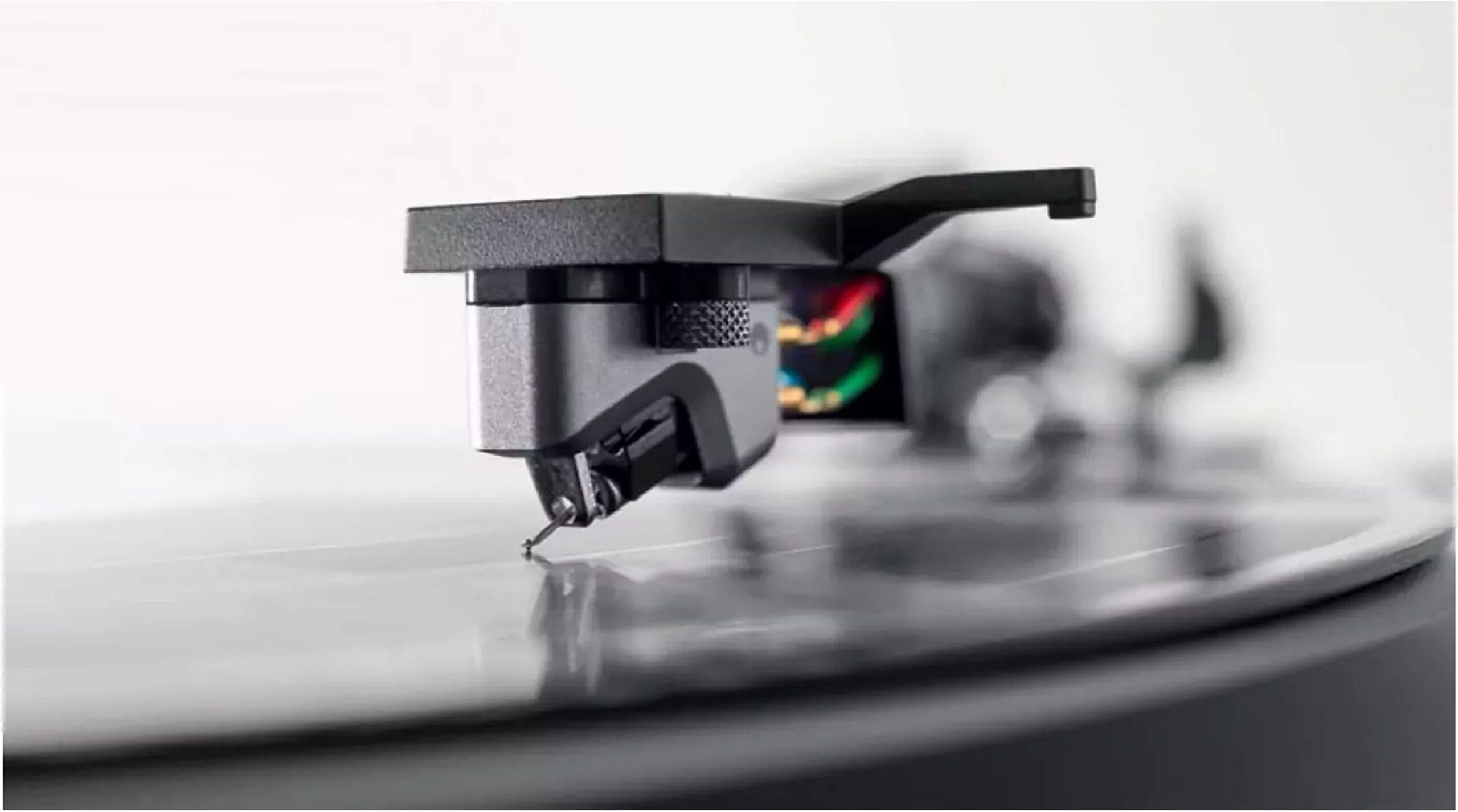
The high‑output MC cartridge is sold only with the Alva TT V2 package.
Cambridge Audio Alva TT V2 Tech Specs
www.cambridgeaudio.com
Dimensions (W x H x D): 43.5 x 13.9 x 36.8 cm
Weight: 11 kg
Measurement Diagrams
Our measurements show that wow and flutter are excellent.
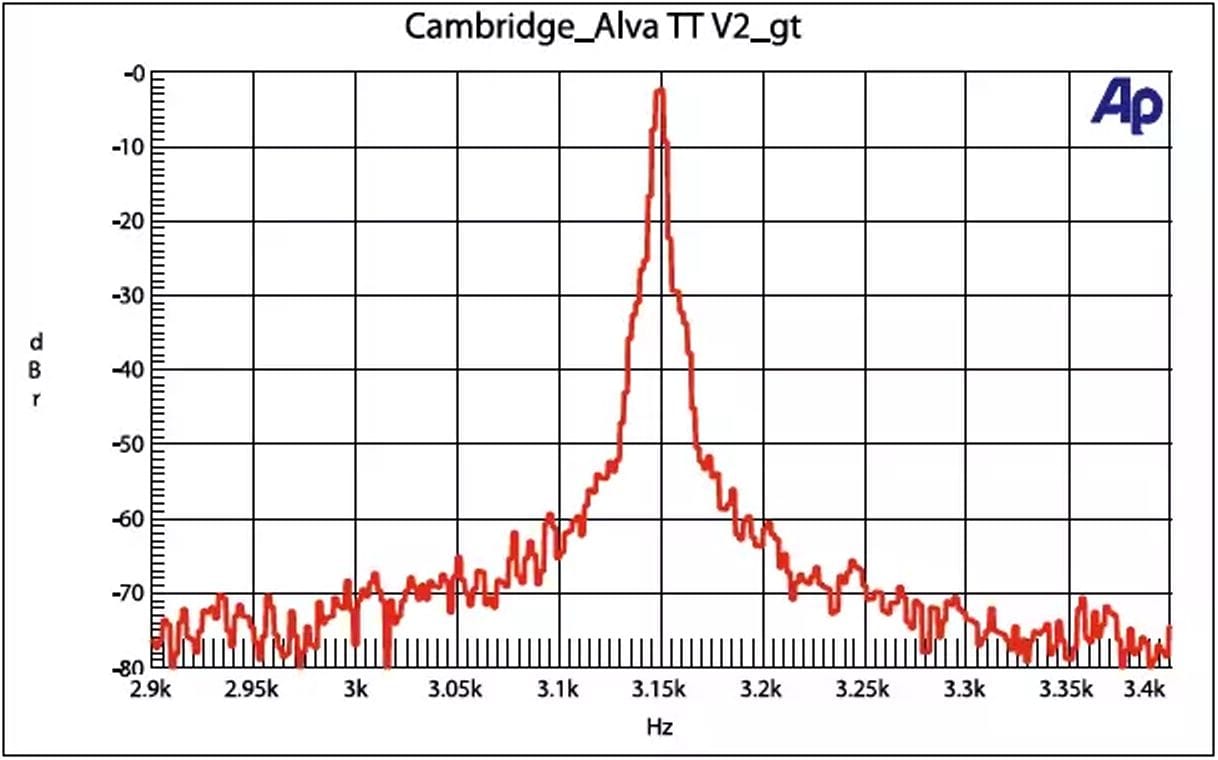
Wow‑and‑Flutter Tone Spectrum: The platter holds speed accurately, with no side peaks (motor hum) and a nice, tight curve.
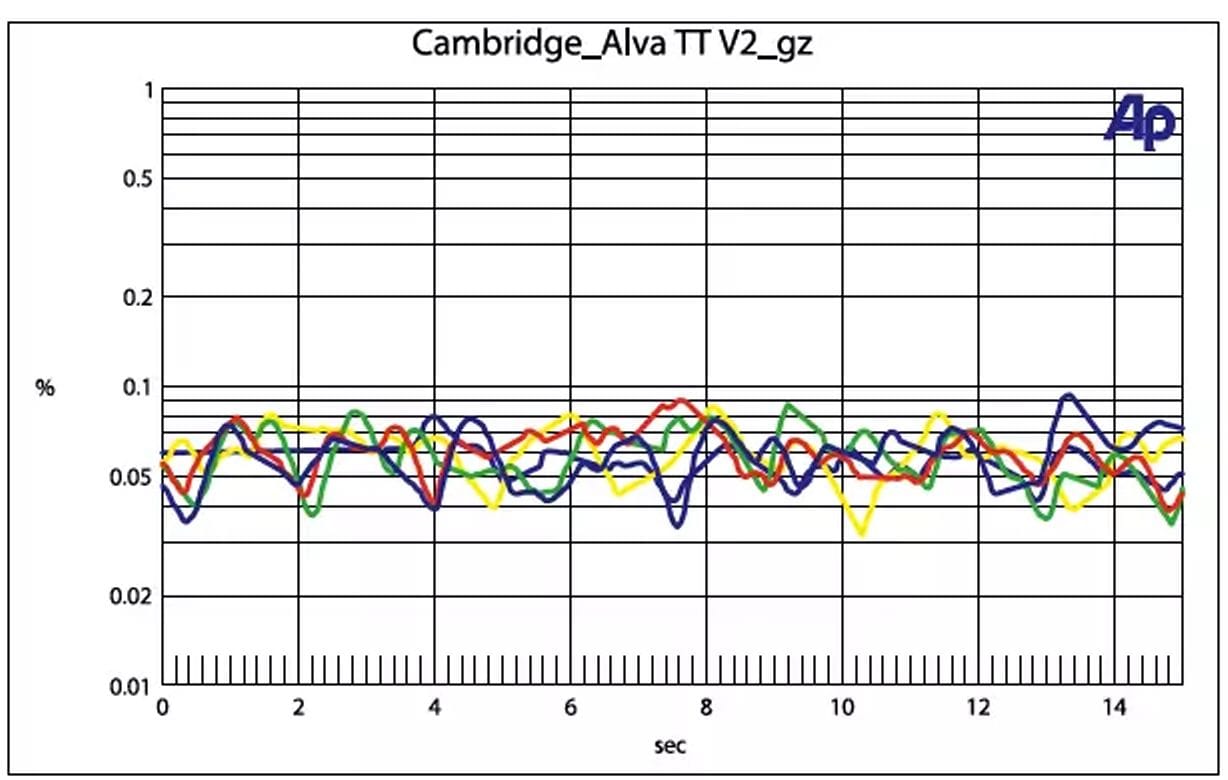
Wow‑and‑Flutter vs. Time: Stable speed without noticeable rotation‑linked deviations.
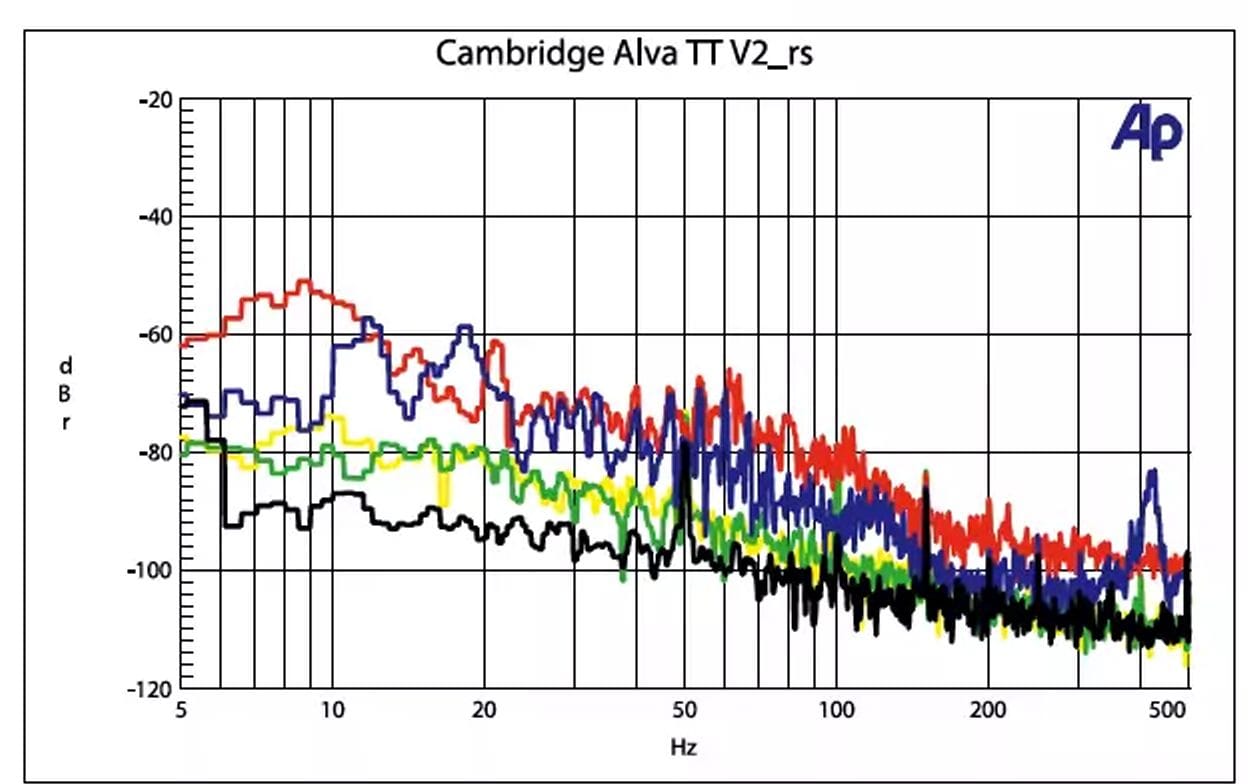
Rumble Spectrum: Very clean overall, with just slight peaks at around 40 to 70 Hz when using clamp and record (in red).
The rotation speed is impressively accurate—hard to improve on, even with more expensive turntables. Rumble performance is similarly good if not exceptional. The Alva uses about 4.7 W in operation. The Alva MC cartridge also performs nicely, with just 0.1 dB difference between channels and an output close to a standard MM (3.71 and 3.68 mV). Its tracking ability is a healthy 100 µm. In short, there’s nothing to complain about. The sound is punchy and detailed enough for serious audiophiles, yet never harsh or overly clinical. Even 1980s pop (like Wham!’s “Club Tropicana”) comes across with energy and expressive vocals—just what you want from a top MC.
This Alva’s motor is direct‑drive, dispensing with rubber belts entirely.
Pianist Christian Sands’s debut album sounded crystal clear and occasionally sublime through the Alva TT V2. Nick Cave’s “Spinning Song” also came through perfectly, thanks to the deck’s spot‑on speed and timbre. It all works so well that we’d wholeheartedly recommend using the built‑in phono stage and cartridge together, just as Cambridge intended: place it, plug it in, and enjoy.
- Voltage (8 Ω): 19.8 V
- Frequency Response Deviation: 0.6 dB
- Current (3 Ω): 6.3 A
Measurements
- Sine Power (1 kHz, THD = 1%)
- 8 Ω: 49 W
- 4 Ω: 88 W
- Music Power (60 Hz Burst)
- 8 Ω: 49 W
- 4 Ω: 90 W
- Signal‑to‑Noise Ratio
- Line (10 V into 8 Ω): 101 dB
- Phono MM/with cartridge (10 V into 8 Ω): 82/78 dB
- Power Consumption
- Standby / Operation: 0.2–1.1 W / 27 W
Verdict
In conclusion, the Cambridge Audio Alva TT V2 excels on many levels. Its features are convenient, it sounds wonderful, it’s easy to handle, and it appeals even to those with finely tuned ears, thanks to its lively, audiophile character.
Test Rating
- Measurements: 8 → 8/10
- Practical Use: 8 → 8/10
- Build Quality: 8 → 8/10
- Sound (Analog / Streaming / USB):
- 51 → approx. 7.3/10
- 52 → approx. 7.4/10
- 53 → approx. 7.6/10
- Overall Verdict: 75 points → approx. 7.5/10
- Price/Performance: outstanding
When you purchase through links on our site, I may earn an affiliate commission. Here’s how it works.
Cambridge Audio Alva TT V2 Turntable // The BEST Bluetooth Turntable We've Ever Heard?!
In this overview, we go over the Alva TT V2 in general and talk about some of the upgrades and why they came about. Check out ...









